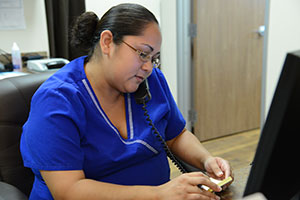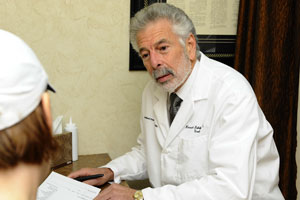 Bladder Problems Bladder Problems
Select from the following topics to learn more about common bladder conditions.
Two Approaches to the treatment of Overactive Bladder (OAB)
OAB (over-active bladder) is found in both men and
women and is associated with the symptoms of
urgency, frequency, nocturia and urge incontinence.
Click here to read about two approaches to the symptoms of urge incontinence.
Overactive Bladder 
Have you ever had the urge to urinate and feel that you can't hold the urge until you reach a toilet to empty you bladder? Do you occasionally lose control of your bladder soiling your clothing and embarrassing yourself? If you answered yes to one or both of these questions you may be one of the more than 17 million people in the United States who suffer from overactive bladder (OAB). Its symptoms include urinary frequency, urgency, and accidental loss of urine due to a sudden and unstoppable need to urinate. This condition is not normal at any age and most people can be helped with medication.
Click here to learn more.
Stop Those Urinary Tract Infections – Cranberry Juice to the Rescue
A 75-year-old female presents with the chief complaint of fever, chills, and right-flank pain. She also has frequency and urgency and occasional stress incontinence. She has a history of recurrent urinary tract infections (UTIs), all managed successfully with oral antibiotics. The physical examination reveals moderate right costovertebral angle (CVA) tenderness. The pelvic exam reveals atrophic vaginal mucosa and a moderate cystourethrocoele. The urinalysis reveals 8-10 white blood cells per high-power field (WBCs/HPF) with bacteriuria. The complete blood count (CBC) has 26,000 WBCs. The urine culture has greater than 105 colony-forming units (CFUs)/mL Escherichia coli sensitive to gentamicin and ciprofloxacin. A blood culture is negative.
Click here to learn more. 
Benign Prostatic Hyperplasia (BPH)
What's
the most-common illness among men 50 and older? You might logically
guess the common cold, but you'd be wrong. Though it's pretty much hush-hush
beyond the urologist's office, trouble urinating is actually the most-common
affliction of the aging male.
How
common?
By age 50, 60 percent of us will suffer from benign prostatic hyperplasia
(BPH), a frustrating condition that makes it difficult or uncomfortable
to go. Put simply, BPH is when your prostate—a chestnut-sized
gland located between the bladder and the penis—interferes with
urine flow.
Sometimes
BPH is mild, merely sending you on multiple trips to the restroom at
night. Occasionally it can be severe, obstructing urine flow completely
or causing kidney damage.
But
most often, though it's irritating and even embarrassing (when you spot
your pants, for example), BPH isn't deadly.
How
do you know if you have BPH?
Look through the following symptoms and rate your symptoms for each
on scale of 0 to 5—not at all to almost always. If you score
more than 10 to 12 points, go talk to a urologist about BPH.
- A sensation
of not having completely emptied your bladder after urinating
- A
frequent need to urinate again shortly after voiding
- Urine flow that
stops and starts several times
- Difficulty postponing urination
- Weak
urine flow
- Dribbling after you've finished urinating
- A need to push or strain to begin urinating
- Getting up at night to urinate
What
can you do about BPH?
The standard solution is surgery: This year, more than 450,000 men will
opt for transurethral resection of the prostate (TURP) to relieve their
symptoms. TURP is the number-one surgery covered by Medicare.
Most
of those operations are not necessary to correct this problem. They're
elective. Unless tests reveal a dangerous complication of BPH, surgery
is an extreme solution.
Men
choose TURP out of frustration; they're simply fed up with the hassle
of BPH. But I'm convinced that many of them wouldn't if they knew about
the alternatives.
Mild
BPH seldom justifies the inherent risks of surgery: anesthesia, transfusions
(TURP can cause significant blood loss) and the rare complications of
impotence and incontinence. There are less-risky, less-expensive options
to try before facing a two- to four-day hospital stay, a month of recovery
and an $8,000 to $12,000 bill.
It
appears we are doing everything to the prostate. Microwave, ultrasound,
radio frequency waves, laser, and even injections of alcohol! Almost
all of these can be done as an office procedure with local anesthesia,
supplemented by oral medication. Most require a catheter for one or
two days and can be associated with worsening of the symptoms prior
to improvement.
Recently
a new type of laser (Green Light) has become quite popular. It was pioneered
at the Mayo Clinic and the results are now approaching 10 years. The
procedure is done under anesthesia at the hospital and takes about an
hour. 90% of my patients are able to leave the hospital without a catheter
and return to work within one or two days. For some of the patients,
there is a worsening of the urgency and frequency prior to the symptoms
disappearing.
First
try just waiting for a while. In one study at the Medical College of
Wisconsin, 35 percent of men with mild BPH got better with a sham
treatment—what
we call watchful waiting. And for persistent mild-to-moderate symptoms,
medical therapy is available. Since the prostate is made up of muscle
and glandular tissue, there are two categories of medication. The
first
include muscle relaxants, Hytrin, Cardura, Uroxatral, and Flomax. Flomax
currently has the majority of the market price because of no required
dose escalation and fewer side effects than Cardura or Hytrin. Uroxatral
is fairly similar but has not been out quite as long. The glandular
tissue can be treated with either Proscar or Avodart. Both shrink
the
prostate by blocking the conversion of testosterone to an active ingredient.
In my experience, and studies are showing, Avodart has a much more
rapid
onset of relieving symptoms than Proscar. In fact, although it is recommended
daily, because of a half-life of excess of five weeks in the blood
stream,
I can even get my patients on a lower less than daily dose. Both types
of medications are lifetime treatments.
Reprinted with permission from Dialog Medical, dialogmedical.com and Neil Baum MD, neilbaum.com.
[Top]
Quick navigation links:
What is a Urology Center | Urologist | Urology Conditions | Urology Services | Resources for Health | Contact Urology Center in North Texas | Sitemap | Home
Disclaimer:
The pictures displayed in www.TexasUrology.com are images of actual patients and employees who have consented to have their picture in this website.

Website Design & Educational Content © Copyright 2023 MedIngenuity, LLC
Medingenuity develops content-rich educational web sites for urologists and urology group practices.
|